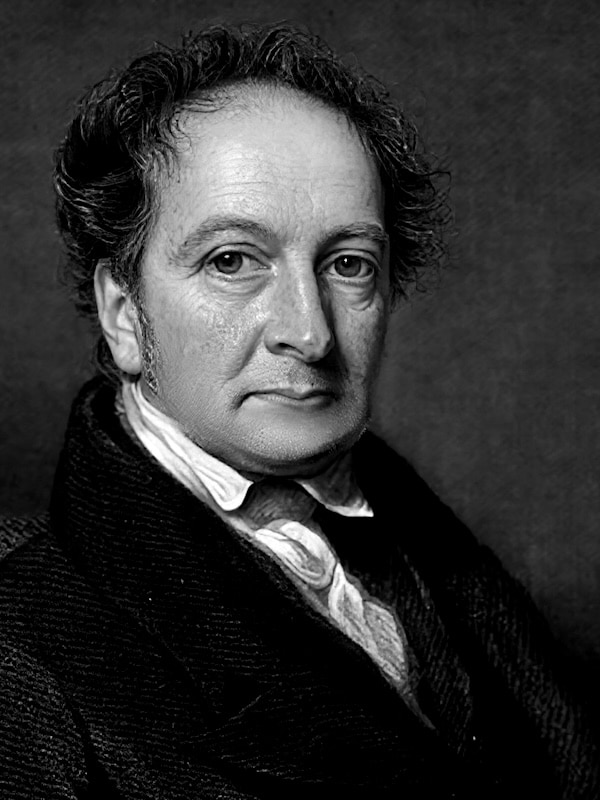John Cheyne

John Cheyne (1777-1836) was a Scottish surgeon and physician.
John Cheyne was a distinguished Irish physician, pathologist, and medical author remembered for his influential writings on apoplexy and nervous system diseases, as well as for the eponymous Cheyne-Stokes respiration pattern. Born in Leith, Scotland, on February 3, 1777, he was the son of John Cheyne Sr., a Scottish army surgeon. He studied medicine at the University of Edinburgh, graduating in 1795 at the age of 18.
After qualifying, Cheyne initially worked as a military surgeon before settling in Dublin in 1801. He held appointments at several hospitals, including the Meath Hospital, the Royal Hospital Donnybrook, and later the House of Industry Hospitals. He became a licentiate and then fellow of the Royal College of Physicians of Ireland, serving as President in 1822.
Cheyne was a prolific writer. His 1812 treatise, Cases of apoplexy and lethargy, is particularly noteworthy for his early description of a characteristic breathing pattern later described by William Stokes (1804–1878). In apoplectic patients, Cheyne observed alternating periods of apnea and hyperpnea, presaging the modern understanding of central respiratory control. He also made important contributions to neuropathology, especially concerning the clinical assessment of the pupil in head injuries, and is considered an early advocate of correlating clinical signs with autopsy findings
Biography
- 1777 – Born February 3 in Leith, Scotland
- 1795 – Graduated MD, University of Edinburgh at age 18; tutored by Alexander Monro secundus (1733-1817) of interventricular foramen fame
- 1795–1800 – Worked as army surgeon; served at the Battle of Vinegar Hill; then began civilian medical practice at Ordinance Hospital in Leith
- 1801 – Moved to Dublin; appointed physician at several major hospitals
- 1811-1817: Worked as a physician at Meath Hospital, Dublin
- 1812 – Documented prognostic value of pupillary changes in apoplexy
- 1813-1819: Appointed professor of medicine at the Royal College of Surgeons in Ireland. Here he also taught war medicine
- 1815–1825 – Published on a wide range of topics including neuropathology and child health; described aorta steatomatous and wrote extensively on laryngotracheitis and hydrocephalus in children
- 1818: Described Cheyne-Stokes breathing in the Dublin Hospital Reports article: A case of apoplexy in which the fleshy part of the heart was converted into fat
- 1820 – Physician General to British forces in Ireland; highest medical rank in Ireland
- 1822 – Elected President of the Royal College of Physicians of Ireland
- 1825 – Developed depression following the death of a close friend
- 1831 – Due to ongoing ill health, Cheyne retired to his estate in Buckinghamshire, England
- 1836 – Died January 31 in Sherrington, Buckinghamshire
- 1843 – His work on mental disorders was published posthumously – Essays on the parital derangement of the mind in supposed connexion with religion
Medical Eponyms
Cheyne-Stokes Respiration (1818)
Cheyne-Stokes respiration describes a pattern of breathing seen in patients at the end stages of illness. It is characterised by repeated cycles of apnoea followed by hyperventilation.
1818 – In Dublin Hospital Reports, John Cheyne (1777–1836) documented a patient with apoplexy and fatty heart degeneration. He observed a peculiar periodic breathing pattern:
The only peculiarity in the last days of his illness, which lasted nine days, was in the state of the respiration: for several days his breathing was irregular; it would entirely cease for a quarter of a minute, then it would become perceptible, though very low, then by degrees it became heaving and quick, and then it would gradually cease again: this revolution in the state of his breathing occupied about a minute, during which there were about thirty acts of respiration.
Cheyne also notes a second patient with a similar pattern but without post-mortem verification, so the report focuses on the first, where autopsy revealed cardiac fatty degeneration.
1854 – William Stokes (1804–1878) in The Diseases of the Heart and Aorta, Stokes described this pattern again in the context of heart failure and CNS depression.
Stokes provided a broader and more physiologically reasoned description. He observed the same periodic respiratory pattern and connected it with advanced heart failure and neurological disease, cementing its pathophysiological basis and linking the two names.
…the peculiar rhythmical type of respiration, in which a series of gradually increasing respirations is succeeded by a series of gradually diminishing ones, and this again by a pause, which is followed by a renewal of the respiratory acts in the same order.
Key Medical Contributions
The pupil in head injury (1812)
John Cheyne (1777–1836) was among the first to document pupillary responses in acute brain injury. In his 1812 writings, he noted:
Great changes may be observed in the state of the different functions in the course of every attack of apoplexy… our prognostic is formed accordingly as the vital functions are more or less disordered.
He highlighted the prognostic value of fixed pupils and observed that:
With any return of sensibility our hopes rise, and with the diminution of it they are destroyed.
We do not despair until the pupil ceases to contract
He highlighted that a fixed pupil indicated poor prognosis, although he did not specifically discuss anisocoria. This was introduced by Sir William Macewen (1848–1924) in 1887
Subarachnoid Haemorrhage (1812)
In his 1812 work Cases of apoplexy and lethargy, Cheyne reviewed cerebrovascular cases in which he attempted to distinguish between intracerebral and extra-cerebral bleeding. Often acknowledged as one of the earliest textual distinctions of subarachnoid haemorrhage from other forms of cerebral bleeding
For the most part, extravasated blood is found within the cranium ; sometimes between the membranes ; sometimes in the substance of the brain.
Major Publications
- Cheyne J. Disputatio medica inauguralis de rachitide. 1795
- Cheyne J. Essay I. Of cynanche trachealis, or croup. In: Essays on the diseases of children: with cases and dissections. 1801
- Cheyne J. Essay II. Of the bowel complaints; more immediately connected with the biliary secretion, and particularly of atrophia ablactatorum or weaning brash. In: Essays on the diseases of children: with cases and dissections. 1808
- Cheyne J. Essay III on hydropcephalus acutus, or dropsy in the brain. In: Essays on the diseases of children: with cases and dissections. 1808
- Cheyne J. The pathology of the membrane of the larynx and bronchia. 1809
- Cheyne J. Cases of apoplexy and lethargy: with observations upon the comatose diseases 1812
- Cheyne J. An essay on the bowel complaints of children. 1813
- Cheyne J. A case of apoplexy in which the fleshy part of the heart was converted into fat. Dublin Hospital Reports. 1818;2:216-223. Reprinted: Cardiac Classics. 1941;1:317-320 [Cheyne-Stokes Respiration]
- Cheyne J. Essays on the partial derangement of the mind in supposed connexion with religion. 1843
References
Biography
- Ormsby LH. John Cheyne. Medical history of the Meath Hospital and County Dublin Infirmary, 1888: 112-115
- Willius FA, Keys TE. John Cheyne (1777-1836). Cardiac Classics. 1941;1:317-320
- O’Brien ET. Dublin Masters of Clinical Expression: I. John Cheyne (1777-1836). J Irish Colleges Physicians & Surg 1974;3:91-93.
- Doyle D. Eponymous doctors associated with Edinburgh, Part 2–David Bruce, John Cheyne, William Stokes, Alexander Monro Secundus, Joseph Gamgee. J R Coll Physicians Edinb. 2006 Dec;36(4):374-81.
- Cheyne JW. John Cheyne. 2015
- Fletcher A, Moor D. The lives and works of John Cheyne (1777-1836) and William Stokes (1804-1878). J Intensive Care Soc. 2017; 18(4): 323-325.
Eponymous terms
- Willius FA, Keys TE. John Cheyne (1777-1836). Cardiac Classics. 1941;1:317-320
- Lorenz R, Ito A. The definition of “Cheyne-Stokes rhythms”. Acta Neurochir (Wien). 1978;43(1-2):61-76.
- Sternbach GL. John Cheyne and William Stokes: periodic respiration. J Emerg Med. 1985;3(3):233-6.
- Lyons JB. John Cheyne’s classic monographs. Journal of the History of the Neurosciences 1995;4(1):27-35.
- Pearce JMS. Cheyne-Stokes respiration. Journal of Neurology, Neurosurgery & Psychiatry 2002;72:595.
Eponym
the person behind the name
BMBS, University of Exeter, UK. Currently working in Emergency Medicine in Perth, Australia. Interested in acute medicine and health inequality.

